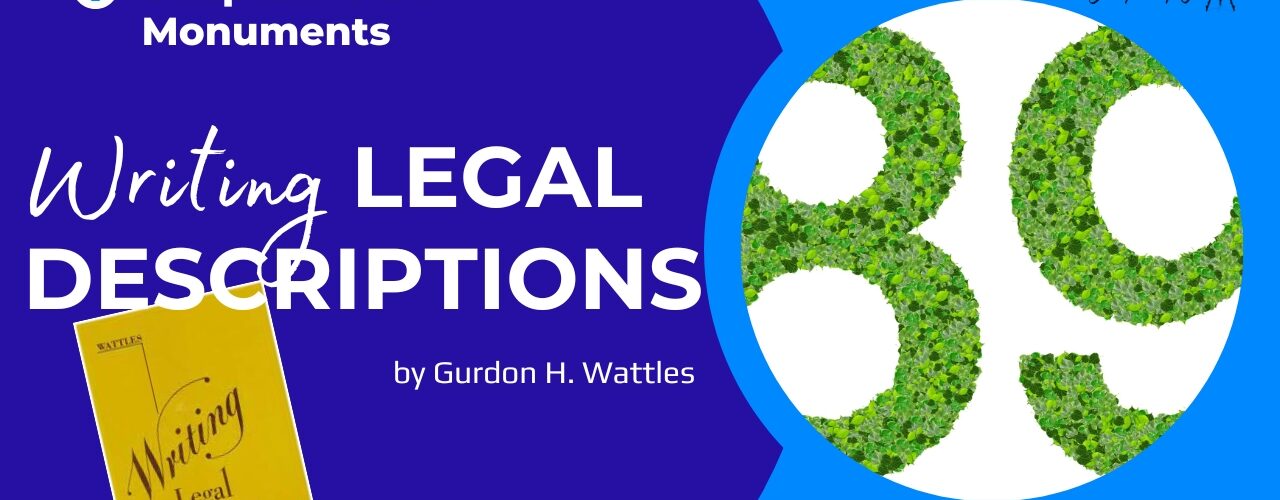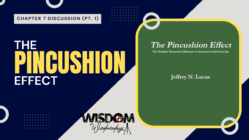Wisdom Wednesdays for the land surveying profession is a bi-weekly roundtable discussion to go over a chapter at a time from our “Surveying Bibles.” The goal is for everyone to read a chapter of a book and then have a roundtable discussion about that chapter. The current book being discussed is Writing Legal Descriptions by Gurdon H. Wattles.
| Summary | |
| Solar Projector, Reading Project, Legal Description | |
| The team had a casual conversation about a solar projector setup and a reading project. They then shifted to discuss a review related to a legal description, focusing on a particular section involving a 2-inch galvanized pipe and its location on the south boundary. There was some confusion about the term “whence,” which was noted as being rare. The team agreed to continue their search for more information. | |
| Monument Roles and Classifications Discussed | |
| Trent Williams led a discussion on the concept of monuments, exploring their definitions and distinctions from section corners and property corners. Jerry emphasized the importance of clearly differentiating monuments as physical markers of corners rather than the corners themselves. The team discussed classifying monuments as legal, defining the theoretical location, or physical, representing that actual location which may be inaccurate. Trent questioned why someone writing a description would need to understand monuments. | |
| Project Descriptions, Surveyors, and Legal Issues | |
| Trent Williams raised concerns about the knowledge level of project descriptions and the role of surveyors. Trent Keenan and James discussed the requirements in Arkansas for land deeds, emphasizing the necessity of descriptions provided by licensed surveyors. The team also discussed the importance of identifying physical features in descriptions and the potential issues with changing definitions of property corners over time. Trent Williams stressed the need to build this identifying practice into his work, highlighting recent legal problems resulting from inaccurate descriptions. Furthermore, the team discussed the methods used to start point of meeting ties, particularly on the East Coast. | |
| Interpreting Monuments and Land Surveying | |
| Trent Williams led a discussion on interpreting monument types and the differences between calling to a road’s center line or edge in land surveying. James emphasized evaluating the whole deed to determine the grantee’s intent, noting they own up to the right-of-way line even if the road closes. Tim shared his experience surveying based on an 1871 document, highlighting difficulties locating historical road data. James introduced the widely accepted “ancient document rule,” though not legislated. Trent discussed his ongoing road vacation project and emphasized understanding the roadway standard of care. jarrod raised an issue in Indiana where a gap between state highway work in the 1930s and right-of-way recording in the 1970s-80s led to property ownership uncertainties. | |
| Assessing Monuments and Complex Property Issues | |
| Trent Williams underscored the necessity of assessing monuments for their historical and cultural significance, cautioning against accepting them without a thorough analysis. He pointed out possible pitfalls, such as monuments failing to meet established criteria. Harmony then shared her experiences with a complex property and roadway issue in Texas, where a misplaced fence line led to the creation of an 850-foot long roadway, resulting in legal and financial implications. She also mentioned a $2 billion trust fund in Texas for land acquisition for parks, including paying legal fees and funding such projects. | |
| Property Boundaries, Surveyors, and Disputes | |
| Harmony expressed concerns about the challenges faced by homeowners and surveyors in determining property boundaries, particularly in the context of disputes over land ownership. Trent Williams and Trent Keenan discussed the role of surveyors in making boundary determinations and the difficulties they face in balancing their expertise with the need to remain impartial. James shared his experiences with similar issues, emphasizing the importance of looking back in history to determine land ownership. Aiden highlighted the potential for legal disputes to become protracted and costly, especially when involving high-profile clients. The group agreed on the need for better communication and collaboration between surveyors, homeowners, and attorneys to resolve these issues. | |
| Monument Relocation and Legal Considerations | |
| Aiden, Harmony, Trent Keenan, Trent Williams, and James discussed various topics including the challenges of life, a planned round table discussion on changing stances, and the relocation of monuments. Trent shared that the Southern chapter is organizing a round table discussion in August, which will include breakout sessions on these topics. The team also addressed the issue of correcting property records when monuments are moved and the legal significance of monuments in land surveys. They debated the handling of discrepancies in monument locations and the necessity for monuments to be referenced in legal documents. James expressed his discomfort with relying solely on unreferenced monuments and emphasized the need for additional corroboration. | |
| Field Notebooks, Engineering Curriculum, and Legal Processes | |
| Trent Williams emphasizes the importance of thoroughly documenting all evidence and not taking information at face value. He shares an example of using field notebooks to record calculations, projects, and any mistakes made. Trent Keenan mentions incorporating field notebooks into the Project Lead the Way engineering curriculum at local high schools. The group discusses the legal processes of road dedications and abandonments, including the need for formal acceptance by municipalities in some cases, as well as the implications of not meeting bond requirements or warranties. The conversation highlights the critical evaluation of data and the value of maintaining detailed records for analysis and discussion. | |
| Legal Concepts of Dedication and Vacation | |
| The team discussed the legal concepts of dedication and vacation, using examples such as streets being dedicated to the city and old alleys being reclaimed by their original landowners. Concerns were raised about potential disputes over the division of vacated streets, and it was clarified that any vacation of land would require an equal split between the city and the landowners. The team further discussed the complexities of dividing vacated streets, with suggestions being made for a division based on the original grantor. However, Trent emphasized that the division method might vary depending on the specific circumstances of each case. | |
| Analyzing Deed Conveyance Language and Description | |
| Trent Williams led a discussion on the analysis of a deed, specifically focusing on the conveyance language and the description. The team examined the document, trying to understand the type of transfer and the intent behind it. Trent identified the deed as a fee-title type transfer and discussed the possibility of a temporary site mitigation work easement. The team also discussed the complexity of interpreting legal documents, particularly when they are not color-coded, leading to some confusion. Ultimately, they agreed that the conveyance language controls the intent of the document. | |
| Revisionary Rights, Streets, and Property Lines | |
| The team discussed the complexities of revisonary rights, streets dedications, and extensions of property lines. Jerry explained the issues with revisiting rights under streets and subdivisions, including the challenge of extending ownership lines. Trent highlighted unique street situations in Utah, emphasizing the need to understand local jurisdictions. The team also planned for future discussions, with a focus on occupation versus title and chapter 11. Lastly, Nick shared his cooking plans for the upcoming week. | |
| AI-generated content may be inaccurate or misleading. Always check for accuracy. | |









